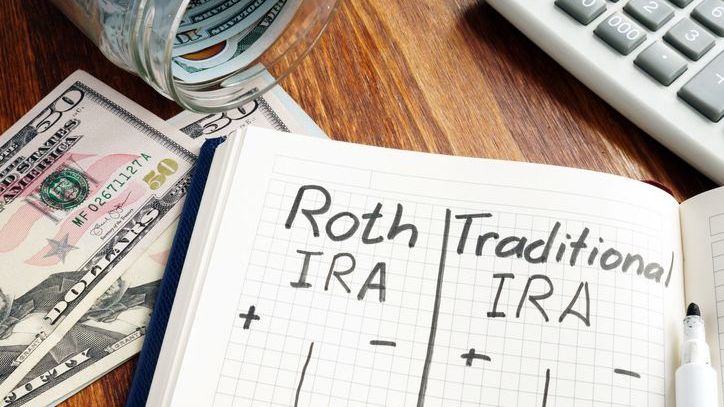For many, saving enough money for retirement can feel like a daunting – even insurmountable – task. But with enough knowledge and planning, a secure retirement may be possible. Whether you’re a young professional just beginning to navigate the world of savings or nearing retirement age, understanding compound interest, strategic investment and prudent financial planning are invaluable. Here are 12 tips to help you boost your retirement savings.
A financial advisor can help you plan and save for retirement. Find a fiduciary advisor today.
1. Start Saving Early
Compound interest is calculated on the initial principal as well as on the accumulated interest from previous periods. Therefore, your retirement savings can grow by generating earnings on both your original contributions and the accumulated interest over time. So, to put it simply, the earlier you start saving, the more time your money will have to grow.
For example, if you begin saving $5,000 annually at the age of 25 in a retirement account that yields an average annual return of 7%, you could potentially accumulate over $1 million by the age of 65. In contrast, starting at age 35 might only yield around $500,000. This shows how an additional decade of saving and earning interest can significantly boost your nest egg.
2. Take Advantage of Employer Matching
Employer matching contributions in retirement savings plans, such as 401(k)s, are a popular way for employees to boost their savings for retirement. Employer matching can vary significantly between different companies. For example, a common arrangement is for employers to match 50% of the employee’s contributions up to 6% of their salary. If an employee earns $50,000 annually and contributes 6% of their salary ($3,000), the employer would contribute an additional 50% of that amount ($1,500) to the retirement plan. However, some organizations might offer a dollar-for-dollar match, while others may cap the contributions at a lower percentage like 3% or extend it up to 10% of the employee’s salary.
3. Max Out Your Accounts
Maximizing contributions to retirement accounts such as 401(k)s is a strategic financial move that offers multiple benefits, primarily through tax deferral and employer matching. When contributions are made to traditional 401(k) plans with pre-tax dollars, the contributed amount is deducted from your taxable income for that year. This reduction in taxable income not only lowers your immediate tax liability but also allows more of your money to work for you in the investment market.
In 2024, the IRS allows you to save up to $23,000 in a 401(k) or similar workplace retirement account, plus an extra $7,500 if you’re 50 or older. These contribution limits get adjusted as often as once a year, so it’s important to keep those caps in mind when you’re deciding how much you can afford to contribute to your workplace plan.
4. Set a Savings Goal Based on Your Need
Establishing a clear and realistic retirement savings goals can help you ensure financial security in your later years. This goal should be calculated based on your individual financial needs and the lifestyle that you expect to maintain during retirement. You should also take into account factors such as inflation, which historically averages around 3% per year; the expected rate of return based on investment choices; and current savings.
Estimating future expenses in retirement is another critical aspect of setting a savings goal. For these, you should consider healthcare, housing and leisure activities, which can significantly impact your financial needs.
To maintain your current standard of living, experts recommend that you aim to replace between 70% and 90% of your pre-retirement income with retirement savings, Social Security and other income streams. Once you determine how much income you’ll need to replace, you can set a savings goal that will support your desired income replacement rate.
5. Choose Investments Wisely

When planning for retirement, the strategic alignment of investments with your risk tolerance and time horizon can help balance growth and security. For example, stocks typically offer higher returns but come with increased volatility, making them more suitable for those with a longer time horizon and a higher risk tolerance. Bonds, on the other hand, provide more stable returns and lower risk, appealing to individuals who are closer to retirement or those with a lower risk tolerance. Mutual funds present a diversified investment option, which can be tailored to various risk profiles and time horizons, offering a balanced approach to asset allocation.
Here are some key points to keep in mind when selecting investments for your retirement portfolio:
- Diversification: Spread your investments across various asset classes to mitigate risk.
- Impact of fees: Be aware of the fees associated with different investment options.
- Market conditions: Stay informed about how changing market conditions can affect your investment strategy.
6. Avoid Early Withdrawals
Making early withdrawals from tax-advantaged retirement accounts carry hefty tax implications that can deplete the financial resources of an individual. These withdrawals are not only subject to regular income taxes but also incur a 10% penalty if taken before the age of 59 ½. For example, a person in the 22% federal tax bracket withdrawing $10,000 early would face $2,200 in federal taxes plus a $1,000 penalty, reducing the actual amount received to merely $6,800.
Withdrawing retirement funds early also carries opportunity cost, primarily due to the loss of compound interest. So if you withdraw $10,000 prematurely from a retirement account with an assumed annual return of 7%, it could result in a potential loss exceeding $76,000 over 30 years.
7. Increase Your Savings Rate
Regularly increasing the retirement savings rate, especially with salary raises or bonuses, can have a profound impact on the final retirement fund. Even small incremental increases can compound over time, leading to a significantly larger retirement nest egg.
Aim to boost your savings rate by 1-2% annually. This incremental approach makes it easier to adjust your budget while significantly enhancing your retirement fund. By the time you retire, these small increases can accumulate to a substantial amount.
8. Open an IRA

Opening an individual retirement account (IRA) is a strategic move that not only complements existing retirement plans, such as a 401(k), but also offers additional benefits including tax-advantaged growth potential and a broader selection of investment options.
There are two primary types of IRAs: traditional and Roth. A traditional IRA provides tax-deferred growth, meaning you won’t pay taxes on your earnings until you withdraw the funds during retirement. A Roth IRA, on the other hand, features tax-free growth and tax-free withdrawals in retirement, provided certain conditions are met. Contributions to a Roth IRA are made with after-tax dollars and are not tax-deductible.
Beyond these tax considerations, IRAs generally offer a wider range of investment options when compared with employer-sponsored plans. IRAs allow investments in a diverse range of assets including stocks, bonds, ETFs, mutual funds, real estate and commodities. This flexibility can enable investors to tailor their portfolios more precisely according to their specific investment goals and risk tolerance.
9. Take Advantage of Catch-Up Contributions
If you’re 50 or older, you may take advantage of catch-up contributions to boost your retirement savings. In 2024, you can contribute an extra $7,500 to your 401(k) or similar workplace plan and an additional $1,000 to your IRA. These extra contributions can help you significantly increase your retirement nest egg as you approach retirement.
Beginning in 2025, people between 60 and 63 years old can save even more, thanks to a provision of the SECURE 2.0 act. The catch-up contribution limits for people in their early 60s will rise to $10,000 or 150% of the standard catch-up contribution limit for the year, whichever is greater.
10. Delay Social Security
Choosing to delay Social Security benefits until after you reach full retirement age can potentially enhance a person’s financial stability during retirement. This decision allows the benefits to increase by approximately 8% for each year the commencement of benefits is postponed, up until the age of 70.
While delaying Social Security may not boost your savings, it will result in more guaranteed retirement income. However, it’s important to consider potential drawbacks or personal circumstances that might influence this decision, such as health status or immediate financial needs. Delaying Social Security benefits can be beneficial in certain situations, but it may not be the best decision for everyone.
11. Contribute to an HSA
A health savings account (HSA) is a strategic financial tool that can significantly boost your retirement planning. HSAs offer a triple tax advantage: contributions are made pre-tax, the growth of funds is tax-free and withdrawals for qualified medical expenses are also untaxed. This unique combination of benefits can potentially provide substantial financial relief during retirement when medical expenses tend to escalate.
12. File for Saver’s Credit
The Saver’s Credit, formally known as the Retirement Savings Contributions Credit, is designed to encourage individuals with low to moderate income to save for retirement. Eligible taxpayers who contribute to their IRA or employer-sponsored retirement plans can benefit from this credit.
For the tax year 2024, the income thresholds to qualify for the Saver’s Credit are set at $36,500 for single filers, $54,750 for heads of household and $73,000 for married couples filing jointly. The credit rate varies based on the taxpayer’s income, offering a reduction of 10%, 20%, or 50% of the first $2,000 contributed. This translates to a maximum credit of $1,000 for individuals and $2,000 for married couples filing jointly. These income limits are indexed to inflation, ensuring that the credit remains relevant and accessible to the intended demographic.
Bottom Line
Boosting your retirement savings involves a combination of strategic planning, disciplined saving and smart investment choices. By implementing these tips, you can potentially build a robust retirement fund, ensuring financial security for your future.
Retirement Planning Tips
- As you save throughout your working career, it’s important to track your progress and have a sense of whether you need to redouble your efforts. SmartAsset’s retirement calculator can help you estimate how much money you’ll have when you retire and whether it will be enough to support your projected spending.
- A financial advisor can also help you plan and save for retirement. Finding a financial advisor doesn’t have to be hard. SmartAsset’s free tool matches you with up to three vetted financial advisors who serve your area, and you can have a free introductory call with your advisor matches to decide which one you feel is right for you. If you’re ready to find an advisor who can help you achieve your financial goals, get started now.
Photo credit: ©iStock.com/LaylaBird, ©iStock.com/Delmaine Donson, ©iStock.com/designer491
